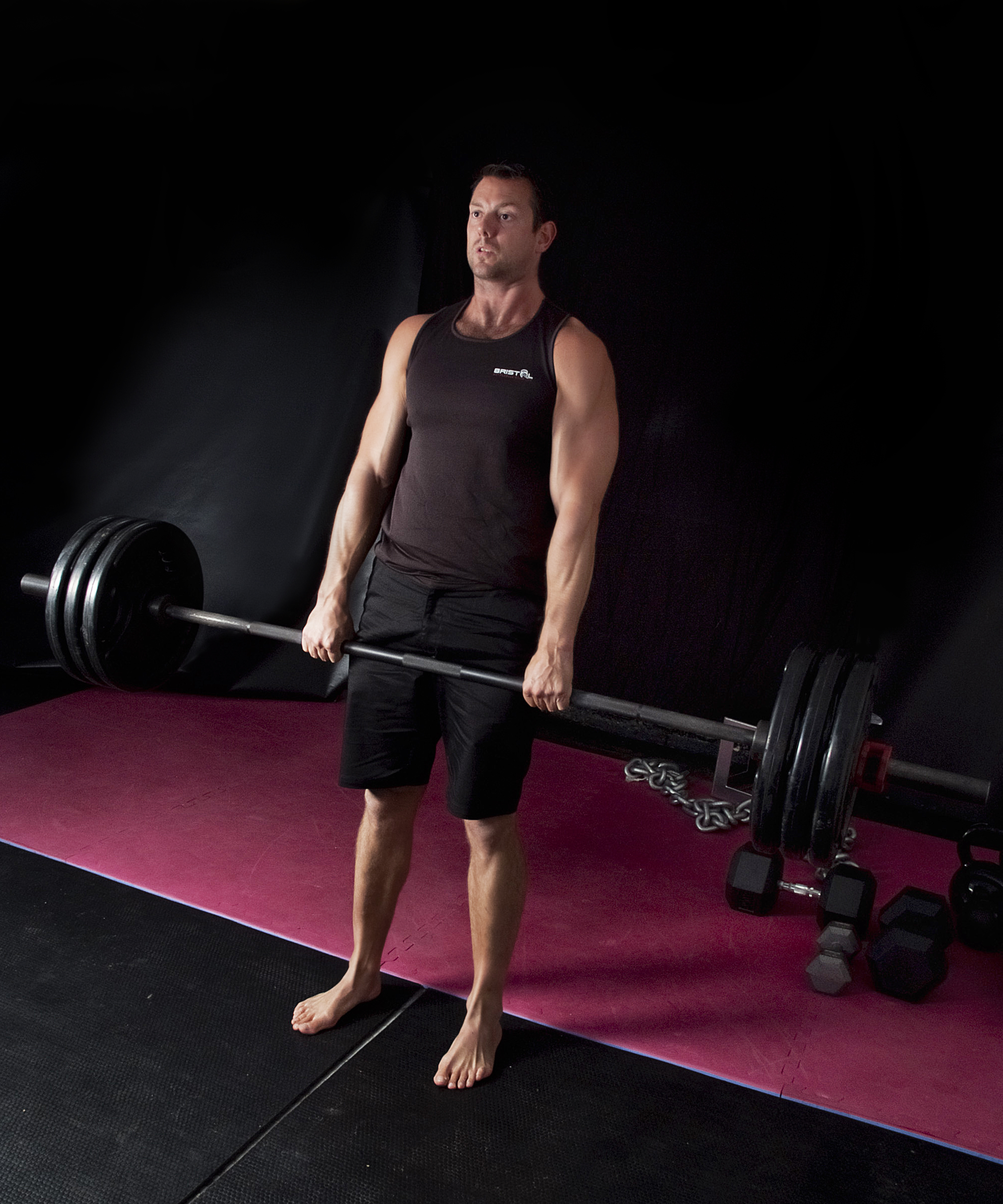In this article you will learn 3 of the most important lessons you need to know in order to maximise your time spent in the gym.
Muscle building is a slow process, you need to synchronise your diet, lifestyle and training program and deliver on it every day in order to see decent results. If you do all of that correctly, you could add 1-2lbs of muscle per month. That might not sound like much, but if you were able to add 2lbs each month for 6 months, your physique would look very different.
Take on board and implement these 3 lessons and the reality of you doing that will be even closer.
Lets get started!
Lesson 1 – The difference between compound and isolation exercises
This first lesson will help you select your exercises and to understand why you are choosing them. There has to be a reason and a good one for each selection you make. It’s entirely possible to make poor choices here and produce a plan that will provide poor results. Let’s avoid that!
Here are the main differences between compound and isolation exercises.
Compound exercises involve muscles that cross two joints. For example, the barbell bench press has the elbow and shoulder joint moving, which is going to recruit the shoulders and triceps as well as the pecs to help move the load.
Isolation exercises involve muscles that only cross one joint, for example, the pec deck or chest fly has movement at the shoulder joint only, and therefore trains the pecs in isolation to other muscles.
Common compound exercises used for the purpose of building strength and muscle.
- Bench press
- Deadlift
- Squat
- Bent over row
- Chin up/pull up
- Dips
Common isolation exercises used for building muscle and strength.
- Leg extension
- Hamstring curl
- Bicep curl
- Skull crushers
- Lateral raise
- Rear delt raise
- Chest fly
- Front delt raise
To keep this short, if person A built his program using all of those isolation exercises, and person B built his using all the compounds, person B would look way more jacked after 6 months.
So can you use isolation exercises as a beginner?
You can, but the key point I want to make here is that the number one reason you go to the gym is to get a visible result from it right?
Nobody wants to invest time and effort into something if they don’t get a return, and the biggest return on your time and energy investment is from compound exercises, not isolation.
Now there is another factor here and that’s in regards to consistency.
If you don’t consistently go the gym and stimulate your muscles, you will not change the size or strength of them, and the thing that will keep you going back is whether or not you enjoy the exercises you are doing.
So from this perspective, if you really enjoy doing some of these isolation exercises and they keep you going back for more, then that is clearly a good thing.
Maybe doing some isolation exercises is optimal for you if this is the case. Just don’t make the mistake of focusing too heavily on isolation.
Lesson 2 – Changing things up
“Everything works, but nothing works forever”
Eventually every program will stop working. This happens because the body has thoroughly adapted to the stimulus provided from the training you are doing. So at this point you will need to make changes.
When this exactly happens can differ from person to person based on a number of factors. One of which is your training age (how long you’ve been training) and another is how the program is set up.
Beginner newbie gains.
As a beginner you get to take advantage of what’s called newbie gains. Since your muscles have never experienced the stimulation that training provides, your body will continue to adapt for longer compared to someone who’s been training for 5 years.
For example, I’ve trained people new to the gym that were able to add weight to the bar almost every week on the deadlift for roughly one year before things got really hard and slowed down.
But sure enough, eventually you will need to change your program and once you’re into your second year of training, you will probably need to change it every 12-16 weeks.
It depends on how it’s set up. Meaning is your training periodised?
Periodisation.
Periodisation refers to splitting your training up into phases.
- Macrocycle – The program in its entirety
- Mesocycle – A phase of the program (eg – the hypertrophy phase)
- Microcycle – One week of the program
To put this simply, the strongest and most accomplished people in the gym are doing periodised training, and the rest stay around the same size and strength level year after year.
Go and ask 5 people in the gym how much their bench press has increased by in the last year. The majority won’t have increased it by much more than 10kg.
That represents a poor training set up and honestly I don’t know why you would bother going to the gym if you only made such a small gain in one year.
The changes that need to be made could be one of the following:
- The main exercises you are doing
- Your accessory exercises
- The training volume
- The average training intensity
- The frequency that you train an exercise
- The rest periods between exercises
Through the process of training you will learn and discover what exercises work best for you and you can keep them in your rotation.
For example, for your leg training, throughout the year you might switch between back squat and front squat and play with the volumes. Back squat is more suited to higher volumes so this would work well in hypertrophy phases. The front squat would be more suited to strength phases.
The changes that need the most attention are in regards to intensity and volume. You can’t just do 3 sets of 10 reps year round and expect to make good progress. I mean you could, but your progress will be painfully slow and frustrating. This can be de-motivating and eventually lead to you becoming disillusioned with the whole idea of building muscle.
Both volume and intensity should wave up and down through the year, and your average intensity should steadily climb over the year.
Of course this all depends on how serious and into your training you are. If you can get to a place where your happy with your physique and strength level and can easily maintain it without spending your entire life in the gym then more power to you!
Lesson 3 – Recovery
Just because you’re sore the following day, doesn’t mean you are more muscular and/or stronger.
Unfortunately it just doesn’t work like that. I wish it did, because I can make myself very sore, very easily!
I would just do different exercises every time I go to the gym and I would use intensity techniques like drop sets, supersets and pyramids.
In fact those intensity techniques do have there place and can help towards building muscle, the problem though is… RECOVERY!
Tendon strength and avoiding injury.
Your muscles recover and grow bigger outside of the gym, not during your workout. How long your muscles take to recover depends on how much total volume you did on them and the intensity at which you trained.
Furthermore, you need to consider that you aren’t just training your muscles here, you are also training your tendons and ligaments to be able to handle the ever increasing heavy weights, and tendons and ligaments take longer to adapt than muscles.
Both your tendons and ligaments have to get stronger in order for you to reach your potential. The issue is that they have poor blood supply so take longer to adapt than muscles.
This is another very good reason why your training should be periodised and move through different phases. When in a higher rep range phase, this typically uses lighter loads and flushes more blood around the body. This is a great time for tendons and ligaments to adapt and get stronger.
But this conversation is also about muscles.
You can not blast your pecs with 100 reps 3-4 times per week.
Doing high volume training and not allowing for adequate recovery not only invites injury to the tendons or ligaments, but it can also send your testosterone plummeting!
In really serious cases it can cause a condition known as rhabdomyolysis.
This is occurs when your body can’t remove the metabolic waste created by repeated muscle contractions fast enough and it ends up in the blood stream. Essentially you destroy your muscle tissue and this causes kidney damage.
Many top level Crossfit athletes experienced this due to excessive training schedules and repeated movements every day.
Less is more.
Now that is on the extreme end, but the point I’m making here is that there is a point at which more is not better, and in most cases less is better because doing less means you can fully adapt to your training, and training is all about creating adaptation.
Training a muscle with around 30 total reps, 2 or 3 times per week is optimal.
6×5, 4×6, 4×8 etc is perfect!
I hope you’ve found this article interesting and its given you some ideas on how to set up your own training to get better results.
If you need any help with that, I am available for program design for any purpose, muscle gain, strength gain, or sports performance.
To your success!
Have a great day!
Pete Luffman
Founder of Bristol Kettlebell club


Hi Peter
I left a mail about 1-1 training
I’m staying in Clifton for a couple of months.
LMK if you can do it.
I
Hi John, where did you send this email? I don’t see anything in my inbox. Can you resend please? Thanks